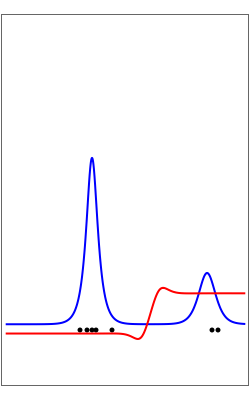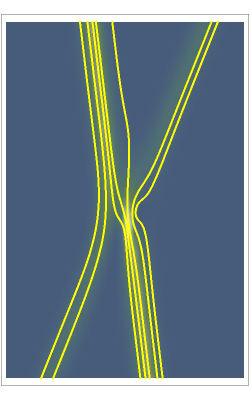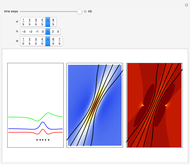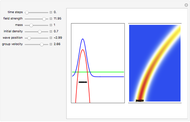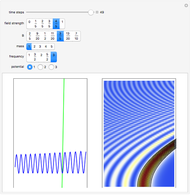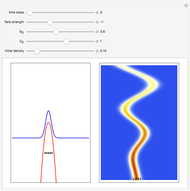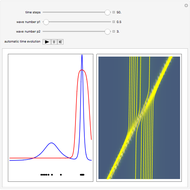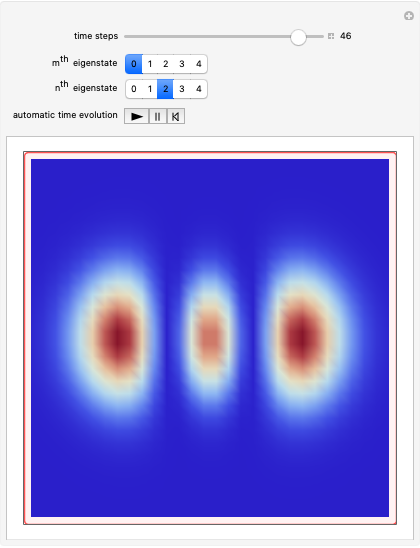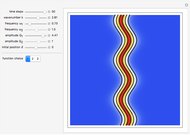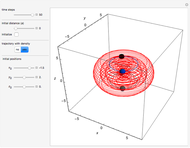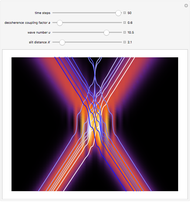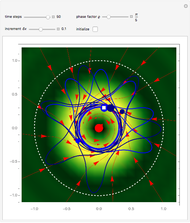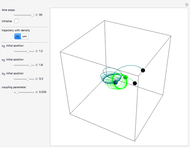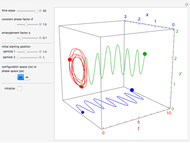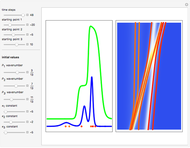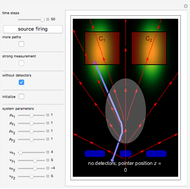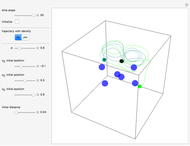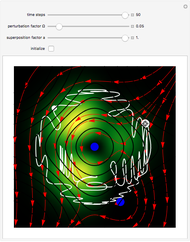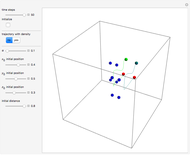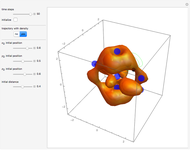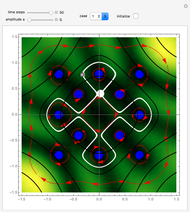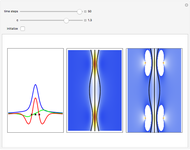Bohm Trajectories for a Type of Derivative Nonlinear Schrödinger Equation

Requires a Wolfram Notebook System
Interact on desktop, mobile and cloud with the free Wolfram Player or other Wolfram Language products.
The time-evolution of the quantum standard wavefunction is determined by the Schrödinger equation and guidance equation. The guidance equation states that the velocity field  for the configuration is given by the quantum current
for the configuration is given by the quantum current  divided by the density
divided by the density  . The guidance equation is derived from the continuity equation, which is a special form of a conservation law.
. The guidance equation is derived from the continuity equation, which is a special form of a conservation law.
Contributed by: Klaus von Bloh (March 2011)
Open content licensed under CC BY-NC-SA
Snapshots
Details
The Hirota bilinear method is applied to find exact  -soliton solutions for the DNLSE (see references). For this Demonstration a two-soliton solution is taken. The soliton has four free real parameters (
-soliton solutions for the DNLSE (see references). For this Demonstration a two-soliton solution is taken. The soliton has four free real parameters ( ,
,  ,
,  ,
,  ) that characterize the velocity, the amplitude, and the width of the
) that characterize the velocity, the amplitude, and the width of the  soliton. Due to the limited CPU power, only
soliton. Due to the limited CPU power, only  is chosen as a free parameter. The other parameters can be found in the para options in the program. The system is time-reversible.
is chosen as a free parameter. The other parameters can be found in the para options in the program. The system is time-reversible.
The left graphic shows the position of the particles, the wave amplitude (blue), and the velocity (red). The right graphic shows the wave amplitude and the complete trajectories in ( ,
,  ) space. The velocity is scaled to fit. In the program, if AccuracyGoal, PrecisionGoal, and MaxSteps are increased, the results will be more accurate.
) space. The velocity is scaled to fit. In the program, if AccuracyGoal, PrecisionGoal, and MaxSteps are increased, the results will be more accurate.
References:
J. Lee, Y. Lee, and C. Lin, "Exact Solutions of DNLS and Derivative Reaction-Diffusion Systems," Journal of Nonlinear Mathematical Physics, 9(1), 2002 pp. 87–97.
W. Struyve and A. Valentini, "De Broglie-Bohm Guidance Equations for Arbitrary Hamiltonians," ArXiv:quant-ph/0808.0290v2, 2008 pp. 1–22.
Permanent Citation
